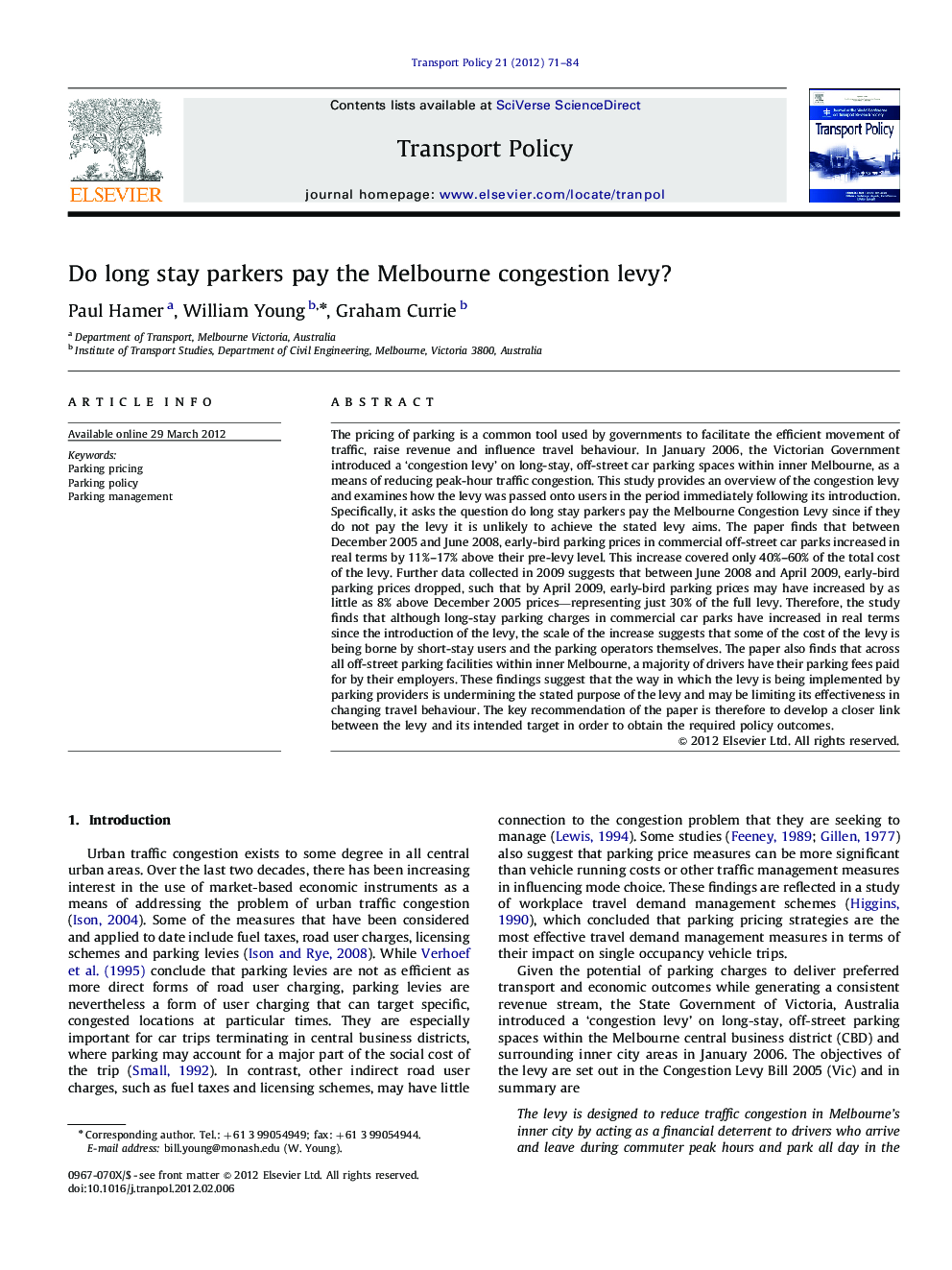| Article ID | Journal | Published Year | Pages | File Type |
|---|---|---|---|---|
| 1065186 | Transport Policy | 2012 | 14 Pages |
The pricing of parking is a common tool used by governments to facilitate the efficient movement of traffic, raise revenue and influence travel behaviour. In January 2006, the Victorian Government introduced a ‘congestion levy’ on long-stay, off-street car parking spaces within inner Melbourne, as a means of reducing peak-hour traffic congestion. This study provides an overview of the congestion levy and examines how the levy was passed onto users in the period immediately following its introduction. Specifically, it asks the question do long stay parkers pay the Melbourne Congestion Levy since if they do not pay the levy it is unlikely to achieve the stated levy aims. The paper finds that between December 2005 and June 2008, early-bird parking prices in commercial off-street car parks increased in real terms by 11%–17% above their pre-levy level. This increase covered only 40%–60% of the total cost of the levy. Further data collected in 2009 suggests that between June 2008 and April 2009, early-bird parking prices dropped, such that by April 2009, early-bird parking prices may have increased by as little as 8% above December 2005 prices—representing just 30% of the full levy. Therefore, the study finds that although long-stay parking charges in commercial car parks have increased in real terms since the introduction of the levy, the scale of the increase suggests that some of the cost of the levy is being borne by short-stay users and the parking operators themselves. The paper also finds that across all off-street parking facilities within inner Melbourne, a majority of drivers have their parking fees paid for by their employers. These findings suggest that the way in which the levy is being implemented by parking providers is undermining the stated purpose of the levy and may be limiting its effectiveness in changing travel behaviour. The key recommendation of the paper is therefore to develop a closer link between the levy and its intended target in order to obtain the required policy outcomes.
► Congestion levy on parking provides considerable income to the state Government. ► Long-stay parking charges in commercial car parks have increased. ► Cost of the levy is being borne by short-stay users and parking operators. ► Majority parkers in off-street facilities have their parking fees paid for by their employers. ► The way the levy is implemented by parking providers is undermining the purpose of the levy.
